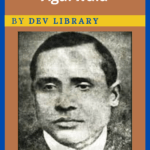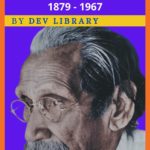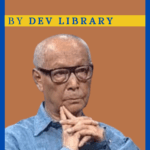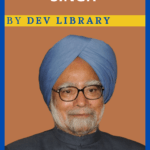The first war of independence against the British in Indian history was led by Maratha warrior Nana Saheb Peshwa II. In the aftermath of the death of Chhatrapati Shivaji in 1849, Nana Saheb Peshwa II was one of the most powerful rulers of the Maratha Empire. To liberate India from British colonial rule, ten to fifteen thousand soldiers under the leadership of Nana Saheb took part in the war against the British rule. Nana Saheb was an important pioneer in the Indian independence movement. Nana Saheb was one of the leaders of the first freedom struggle that was started in 1857 to free India from the British clutches.

Biography of Nana Saheb Peshwa II
| Name | Nana Saheb Peshwa II[1] |
| Real Name | Nana Govinda Dhondu Pant |
| Date of Birth | May 19,1824 |
| Place of Birth | Bithoor, Uttar Pradesh |
| Father’s Name | Narayan Bhatt, Bajirao II (adoptive father) |
| Mother’s Name | Saraswati Bai |
| Death | September 24,1859 |
Early Life of Nana Saheb Peshwa II
Nana Saheb Peshwa II was born on May 19, 1824, in Bithoor, present-day Uttar Pradesh. His full name is Nana Govinda Dhondu Pant. Nana Saheb’s father’s name is Narayan Bhat, Bajirao II (adoptive father) and mother’s name is Saraswati Bai. Nana Saheb’s two brothers are Raghunatha Rao and Janardhan. Importantly, Raghunatha Rao had cheated the Marathas by coming in contact with the British.
Importantly, Bajirao II, the last Marathi ruler, was childless. In view of this, Bajirao adopted Nana Saheb as his son, heir-presumptive to the Maratha’s throne, and eligible for his adoptive father’s continuing annual pension of £80,000 from the East India Company. In view of this, Bajirao II declared the legacy of Bithoor as his adopted son Nana Govinda Dhondu Pant.
Also Read: Biography of Mangal Pandey
Nana Saheb’s Contribution
Well-educated Nana Govinda Dhondu Pant studied Sanskrit language extensively and had a greater hold on the Sanskrit language. Nana Saheb, who had a deep knowledge of religion, also mastered the art of warfare as an accomplished Maratha warrior. Nana Saheb ruled Bithoor for 20 years after the death of Bajirao II.
Tatya Tope, Ashfaqulla Khan, Marnikarnika Tambe were childhood friends of Nana Saheb. With them Nana Saheb later had a strong anti-British fight, Azimullah Khan and Manikarnika Tambe who subsequently led him to a strong anti-British war.
It may be recalled that since 1848, Lord Dalhousie, viceroy of the East India Company, applied the abolition policy and laid special emphasis on bringing the state of India under British rule. According to this policy, if an Indian king dependent on the British dies childless, then that state becomes under the East India Company. Apart from this, if a childless king wants to pick up a child, then it is necessary to take permission of the East India Company.
Lord Dalhousie used this policy to annex the states of Sambalpur, Jainpur, Jhansi and Nagpur and incorporated it into his own kingdom. As a result, in addition to increasing discontent among the indigenous kings, the resentment of the indigenous people against racism, economic exploitation, and British rule that had been practiced for hundreds of years was accumulating. As a result, Mangal Pandey first launched a revolt against the British in 1857 at the Barackpore Army Camp in Bengal to disperse the British from India. Gradually, the rebellion spread all over India.
Bajirao II, the Marathi ruler, died in 1851. It is to be noted that at that time, the British Company had given eighty thousand rupees as allowance to the Marathi ruler Bajirao II. After his death, Nana Saheb was the worthy heir to the Marathi throne as an adoptive child, besides being eligible for the adopted father’s annual pension of £80,000 from the East India Company. But after the death of Bajirao II, the British company stopped the pension and did not consider Nana Saheb to be a Marathi heir. Nana Saheb was enraged by the whole talk. For which Nana Saheb sent an Azimullah Khan to England in 1853 to plead his case with the British Government and appealed to the British government to return the closed allowances and grants. But Azimullah Khan could not convince the British and returned in 1855 after failing from England. After Azimullah Khan’s return from England Nana Saheb declared that British power from India should be destroyed.
It may be recalled that Nana Saheb sent a letter to the General Wheeler in Allahabad on June 5,1857, informing him to expect an attack next morning at around 10 am, and on June 6, Nana Saheb launched a surprise attack on the British at around 10:30 am. The company forces were not adequately prepared for the attack but managed to defeat themselves as the attacking forces were reluctant to enter the entrenchment. As a result, the British troops retreated and took shelter in the forts of the company. There, the British soldiers had to starve, to be in close contact with the sun and die. Subsequently, by June 10, more rebel troops had joined Nana Saheb. He is believed to have led against the British by mobilizing about ten to twelve thousand soldiers. It may be recalled that on June 23, Nana Saheb again attacked the General Wheeler with a large number of army. General Wheeler son Leftenant Gordon Wheeler was killed in the attack. Subsequently, The General Wheeler decided to surrender and leave Allahabad.
While leaving Allahabad, Nana Saheb’s troops again clashed with the British Army. It is to be noted that on the orders of Nana Saheb’s associate Tatya Tope, British women and children were captured and British soldiers were brutally killed. But on July 15, Saheb ordered the killing of British women and children as well. In view of this incident, on July 16, 1857, the East India Company sent General HaveLock to Kanpur. He was informed that Nana Saheb is in Ahirara village near Kanpur. General HaveLock reached Ahirara village and killed all the villagers indiscriminately, Nana Saheb managed to escape from that village with various tactics. And as a result General HaveLock was able to bring Kanpur back under the British rule.
Subsequently, Nana Saheb took shelter with Nepalese Prime Minister Jung Bahadur Rana to gain more power. Nana Saheb Peshwa II fought against the British during the Sepoy Mutiny with Rani Laxmibai of Jhansi.
Disappearance of Nana Saheb
Nana Saheb went missing after the British company took over Kanpur. But in November 1857 Nana Saheb tried to retake Kanpur with Tatya Tope. He managed to control all the routes to the west and northwest of Kanpur but was later defeated in the Second Battle of Kanpur.
Significantly, Nana Saheb was reported to be suffering from malaria fever in September 1857, however this is doubtful. Rani Laxmibai, Tatya Tope, and Rao Saheb declared Nana Saheb as their Peshwa in Gwalior in June 1858.
Nana Saheb’s Death & Connection to Nepal
Importantly, Nana Saheb had been hiding in Nepal for a long time. By 1859, Nana was reported to have fled to Nepal. Perceval Landon recorded that Nana Saheb spent his days safely with his wife in western Nepal, in Thapa Teli, near Ririthang, under the protection of Nepalese Prime Minister Jang Bahadur Rana. His family also received protection, in Dhangara, eastern Nepal, in exchange for precious jewels. In February 1860, the British were informed that Nana’s wife had taken refuge in Nepal, where they resided in a house close to Thapathali. Nana himself was reported to be living in the interior of Nepal.
It is important to note that while in Nepal, Some government records maintained that Nana Saheb died in Nepal after being attacked by a tiger during hunting on September 24,1859, although there are differences between other records on this issue. The last days of Nana Saheb’s life were not known properly. Nana’s ultimate fate was never known.
Conclusion
Nana Saheb’s contribution to the history of India’s freedom struggle is very important. Nana Saheb Peshwa II was one of the strongest fighters of the first freedom struggle that started against the British. Nana Saheb’s courage will always remain a source of inspiration during the Sepoy Mutiny of 1857, which shook the foundations of British rule in the Indian subcontinent. In one word Nana Saheb is a glorious example of patriotism and national pride. He is a source of inspiration for the people of the entire country. His name will always remain etched in golden letters in the history of India and will remain alive in the hearts of every Indian.
FAQ’S About Nana Saheb
1. What is Nana Saheb’s real name?
Ans: Nana Saheb’s real name is Nana Govinda Dhenu Panth.
2. When and where was Nana Saheb born?
Ans: Nana Saheb was born on May 19, 1824, in Bithoor, Uttar Pradesh.
3. What were the names of Nana Saheb’s father and mother?
Ans: Nana Saheb’s father’s name is Narayan Bhatt Bajirao II (adoptive father) and mother’s name is Saraswati Bai.
4. Who declared Nana Saheb the legacy of Bithoor?
Ans: Bajirao II, the last Marathi ruler, was childless. In view of this, Bajirao declared the legacy of Bithur as his adopted son Nana Govinda Dhondu Pant.
5. Why did the British did not considered Nana Saheb as a Marathi heir?
Ans: Nana Saheb is the adopted son of the Marathi ruler Bajirao II. According to the abolition of rights introduced by the British, the adopted child cannot enjoy any rights. In view of this, after the death of Bajirao II, Nana Saheb was eligible for the adopted father’s annual pension of £80,000 from the East India Company, but due to the fact that he was an adopted child, the British company stopped the pension and did not consider Nana Saheb to be a Marathi heir.

Hi, I’m Dev Kirtonia, Founder & CEO of Dev Library. A website that provides all SCERT, NCERT 3 to 12, and BA, B.com, B.Sc, and Computer Science with Post Graduate Notes & Suggestions, Novel, eBooks, Biography, Quotes, Study Materials, and more.








